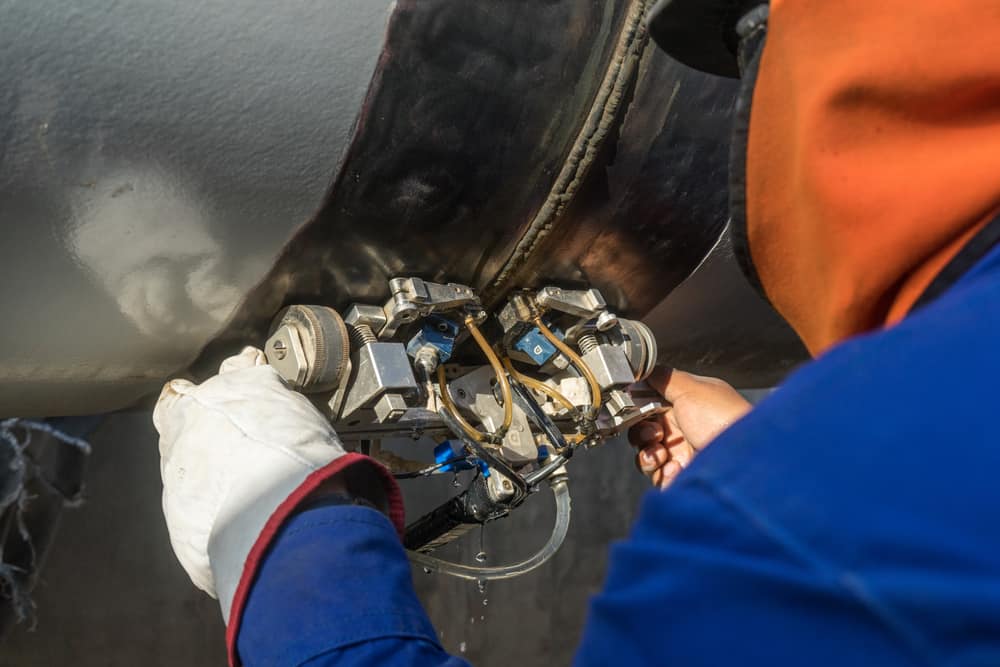
Today, industrial production for much of the world has entered the fourth industrial revolution. Often referred to as industrial IoT, or IIoT, this revolution is based on digitization and the increased utilization of cloud computing. In the metal assembly industry, IoT has ushered in advantages that include innovations to operational settings management across machines. In the near future, IoT in welding will likely extend its footprint to encompass more of this industry’s landscape.
Welding quality, however, will still be judged by some measure of inspection or evaluation. Even with advanced management and operational control capabilities, a good preventive maintenance program will continue to be necessary. And if welding process automation can be used as a guide, calibrating welding equipment will also continue to be an essential task. Let’s take a look at why calibration is important for good orbital pipe welding, and then we can determine some guidelines to ensure good welds are always produced.
Why Does Automated Orbital Pipe Welding Equipment Need Calibration?
Welding processes today may exist at the fringe of the cloud; however, automation and software—two pillars of IIoT—are well entrenched among the new technology for orbital welding machines. For many welders, GMAW is the preferred method for pipe welding. However, if speed is the primary criterion, FCAW (which uses a wire fed electrode) may be a better choice. This is especially true for exterior work where the use of gas may be subject to wind disbursement. Overall, though, the benefits of GTAW that include flexibility and weld quality, outweigh other wire-feed pipe welding methods.
Even with GTAW, pipe welding can still pose many challenges. For example, it is difficult to maintain a consistent weld throughout the process. The welder must control the weld current, arc voltage, filler material feed rate, as well as other variables. Likewise, during the welding process, these variables may need to change depending upon the diameter of the weld. Additionally, the process can be very slow. Although automated orbital welding provides a means to easily control many of these factors, these changes are not automatic. Therefore, the welder will need to constantly monitor weld quality and make adjustments or calibrate the equipment as necessary.
Guidelines for Calibrating Welding Equipment for Orbital Pipe Welds
As opposed to other types of fusion welding, automatic calibration for orbital pipe welding is quite complicated due to the virtually limitless number of possible diameters. Therefore, the welder will need to manually set up the weld head based on job requirements. Fortunately, there are some guidelines that can be applied to aid in calibrating welding equipment for orbital welds, as listed below.
How to Calibrate Welding Equipment for Orbital Pipe Welding
- Travel speed / oscillations
Depending upon your equipment, the weld head may be programmed to run in inches-per-minute or by revolutions. To calibrate, use the factory recommended settings to ensure the correct distance or width of oscillation is met.
- Wire feed rate
To easily check the wire feed, cut a small piece of wire (for example, the length that should be used in a minute) and run it through the feeder. The entire length of wire should be sent through in sync with the time interval. If not, adjustment is needed.
- Gas flow / coverage
Experience plays a key role here. The welder must adjust the gas flow to ensure there is no oxidation.
The above are easy calibration steps the welder should perform each day. Other potential problems will only become evident from weld inspection. For example, a current issue can be diagnosed if the weld is too cold or hot. In addition to these steps, it is advisable to perform a daily inspection checklist. Actions such as these should be taken regularly as part of a more comprehensive maintenance schedule to keep your orbital equipment producing high quality welds.
Since its founding by former NASA engineers in 1976, Arc Machines, Inc. has been committed to advancing the state of welding equipment and processes. This includes high-quality, precision GTAW welding machines and weld heads that make it easy to leverage the advantages of orbital welding. For inquiries regarding products, contact sales@arcmachines.com. For service inquiries, contact service@arcmachines.com. Arc Machines welcomes the opportunity to discuss your specific needs. Contact us to arrange a meeting.




